THESE are the five faces of commuter pain across Sydney and the Central Coast.
From Blackheath to Bankstown and up north to Bateau Bay, commuters are at breaking point as experts warn it’s creating a generation of zombies.
A week out from the State Government’s timetable overhaul, a special investigation by NewsLocal can reveal commuters have little faith the extra train and bus services will reduce travel times and allow them to improve their social and family lives.
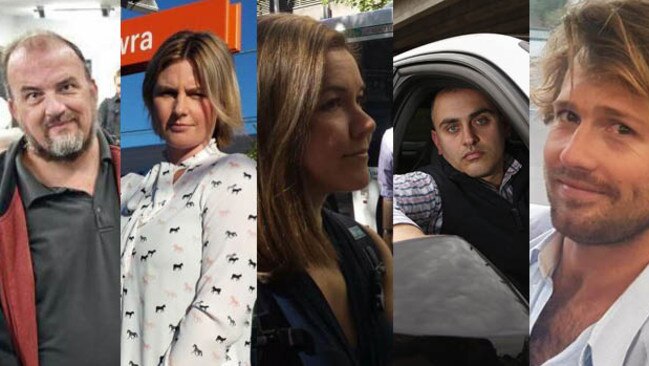
Long-time commuters say the trauma of sardine-packed, late-running trains and buses is worse than ever. Many spend the equivalent of several weeks per year commuting and in the worst cases up to 50 full days a year on public transport.
HORNSBY MAYOR VOWS TO TURN BACK THE COAST CARS
Sydney’s population growth — expected to soar by 1.7 million to 6.3 million in 2036 and up to 7.9 million in 2056 — has forced many people to live in outer suburbs and in turn increase commuting times.
‘four years of my life travelling to work’
One man has already racked up a mind-blowing four-and-a-half years of his life riding buses, trains and cabs in getting to work and back.
Matthew Gregory, 51, has commuted up to five hours a day from Hardys Bay, on the Central Coast, to the Sydney CBD over the past three decades.
“It’s been tiring to say the least,” he said.
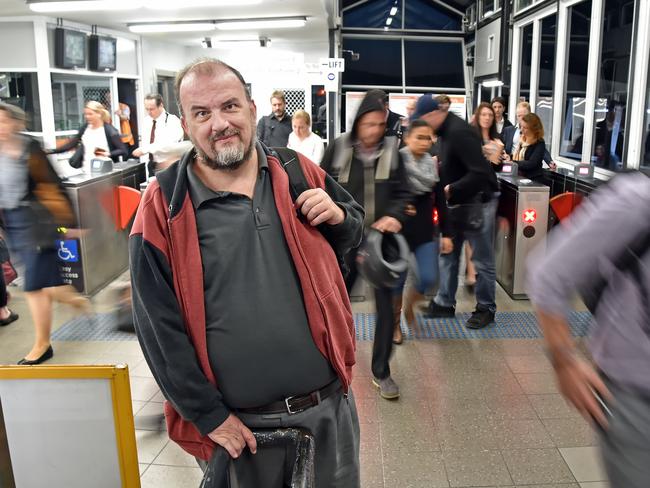
It’s meant Mr Gregory has spent a total of four-and-a-half years of his life on trains and buses.
“I wish you hadn’t told me that; it’s been tiring to say the least,” he said.
“Commuting is only getting worse, too. The government needs a fundamental rethink on public transport if it wants more people to use public transport. It’s just so slow and years benhind where it should be.”
Like thousands of other Coasties, Mr Gregory’s commuting day starts before the crack of dawn.
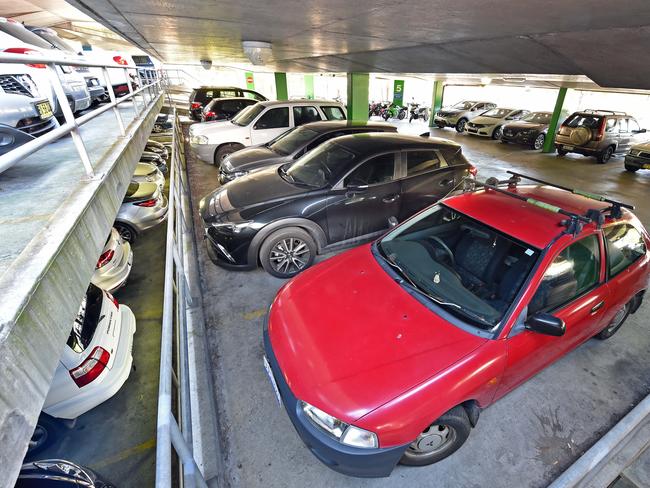
And this is just the beginning of a painful trip to the Sydney CBD and back as the tyranny of distance, and “painfully slow” and “unreliable” public transport, bites hard.
He takes the 5.30am bus from Hardys Bay to Woy Woy train station, which generally takes about 50 minutes to cover the 16km stretch.
He then boards the 6.26am train service to Central, which takes just shy of 90 minutes.
After a day of work for the Department of Veterans’ Affairs, he heads home on the 4.29pm train from Central to Woy Woy, getting in about 5.45pm.
Mr Gregory, who is visually impaired, then gets a taxi home, costing about $40, because he would have to wait for at least another hour for the next bus to Hardys Bay.
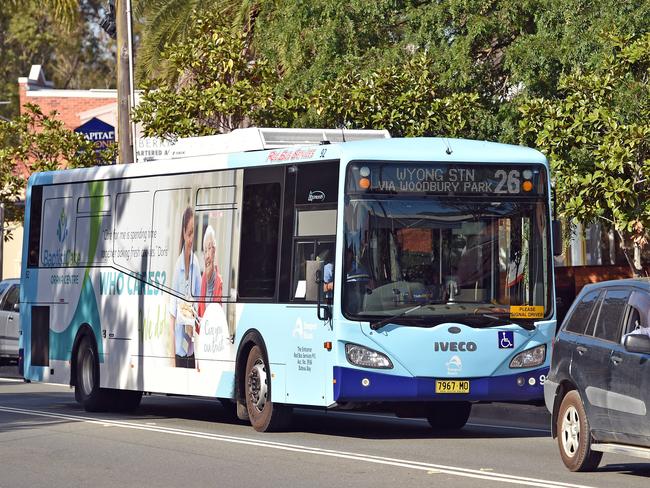
Over the course of a week he is spending the equivalent of a full day on public transport. He has commuted for the past 33 years and says “it’s only getting worse”.
Mr Gregory’s biggest bugbear is the lack of peak-hour bus services in the region’s southern suburbs.
“There are only two buses which run from Woy Woy to Hardy Bays between 3pm and 7pm (at 3.16pm and 6.56pm); it’s just not good enough,” he said. “I’ve lived on the Coast for 43 years and have been commuting for 33 years. There are not enough bus services around the whole region. And all the routes are now much longer than they used to be.”
On the Northern Beaches, some fed-up commuters have little faith in the new $500 million B-Line bus service — which kicks off on Sunday — reducing their travel times.
“I am born and raised in Sydney. I love Sydney, but Sydney has choked. It’s not choking, it has choked,” Elizabeth Smith, 32, said. “It’s too busy, I’ve had enough.”
She said the new B-Line service was “a huge expense” and “I strongly doubt there’s any real benefits in it”.
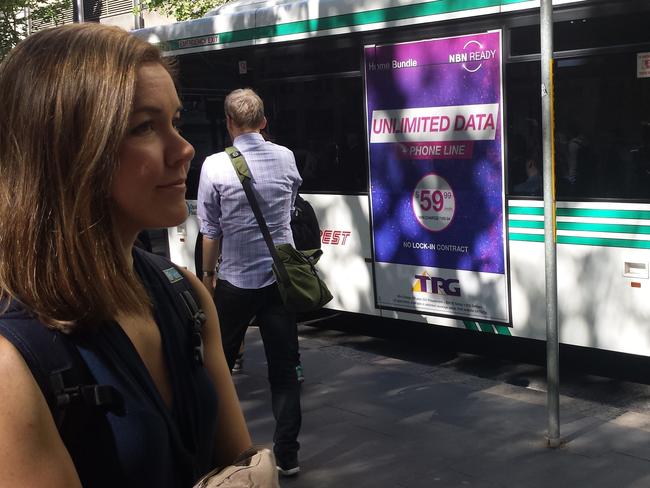
The long and draining commutes from the west to the city have taken a hefty toll on personal lives.
Cameron Brown, 31, of Blackheath, laments the loss of “a life outside work” as he’s stuck on a train for four hours each workday after catching the 5.44am Blue Mountains service to Central.
On the roads, major congestion around Sydney is driving some commuters to the brink of having a Michael Douglas Falling Down moment, even on short runs to neighbouring suburbs.
Cumberland councillor Joe Rahme has driven down Parramatta Rd via Auburn to Fariola St, Silverwater, for work over the past eight years. He says the 6km drive takes 10 minutes in the off peak but 25 minutes just after 8am on weekdays at a snail-like average speed of 14.4km/h.
He blames poorly co-ordinated planning for the traffic snarls.
GRIDLOCK IN GRANVILLE
“If you’re going to build units, which I’m all for, it’s about widening the roads ... the entry and exit points, so you’re not getting these bottlenecks,” a frustrated Mr Rahme said.
The widespread shortage of commuter carparking is forcing many Central Coast residents to drive to the Hornsby shire to catch a train to work in Sydney.
Abby Jones drives from Bateau Bay to Berowra to catch the train to Olympic Park for work because she can never get a carpark at her nearest station in Tuggerah after 6.30am on weekdays.
“I actually save 40 minutes in my commuting day by doing this,” the 35-year-old said. “I’ve got two young girls and I’d rather spend that time with them.”
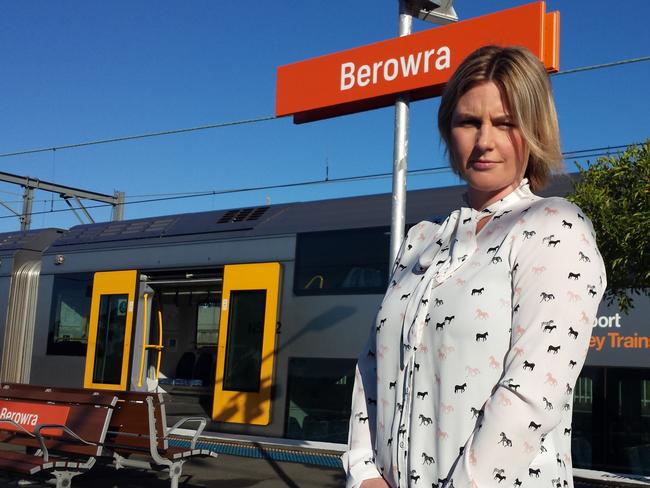
CRUNCH TIME FOR INNERCITY TRAINS
IT’S crunch time for Sydney’s sardine-packed inner-city trains as fears grow that 50 years of commuter pain won’t be eased in the timetable revamp.
Latest transport data shows stations on the Inner West Line resemble Third World conditions on the eve of more services being rolled out from Sunday.
Newtown is running at nearly double capacity (180 per cent) and Redfern fractionally less at 135 per cent around 8.30am on weekdays. The Bureau of Transport Statistics considers trains operating at 135 per cent of capacity as “uncomfortable” and causes delays.
New Opal data also reveals a whopping 6335 train services from Redfern were standing-room only for the 88 days from November 2016 to February 2017.
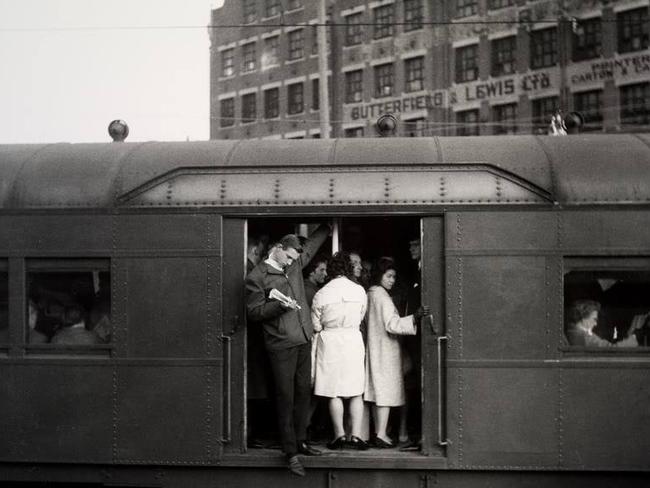
A photo of an overloaded “Red Rattler” at Redfern in 1965 is not dissimilar to the crammed carriages of today at stations from Strathfield to Central.
Fiona Le, of Marrickville, has commuted to work on public transport in Sydney for the past 20 years and says it’s worse than ever on overcrowded trains.
“It’s so busy; you’re packed in like sardines. I never get a seat,” Ms Le, who catches the 8.29am train from Stanmore to Central for work, said.
“Over the years it’s become more and more crowded, as you’d expect with population increases and more people moving to the inner-city suburbs. You can’t blame people for doing this; I’m among those who made the decision to live closer to the city.”
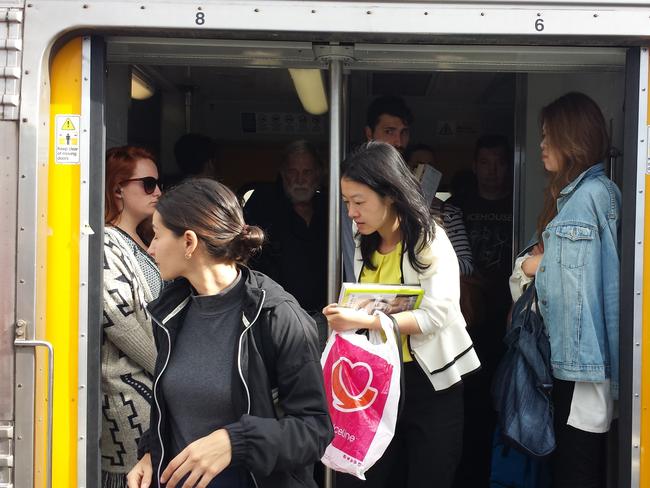
She has little hope the rollout of more train services will improve the comfort and reduce the time of her commute.
“I’m not optimistic about the future of public transport in Sydney,” Ms Le said. “It’s only going to get more crowded.”
Transport Minister Andrew Constance said the timetable changes would lead to an increase in turn-up-and-go services across the Sydney network.
“Travel patterns are changing,” he said. “There are now more day trippers, schoolchildren and those working flexible hours who want to leave the city earlier so a big part of these improvements are to cater for the changing needs of customers.”
Transport for NSW says it has already had 230 complaints about the new timetable since it released the changes last month.
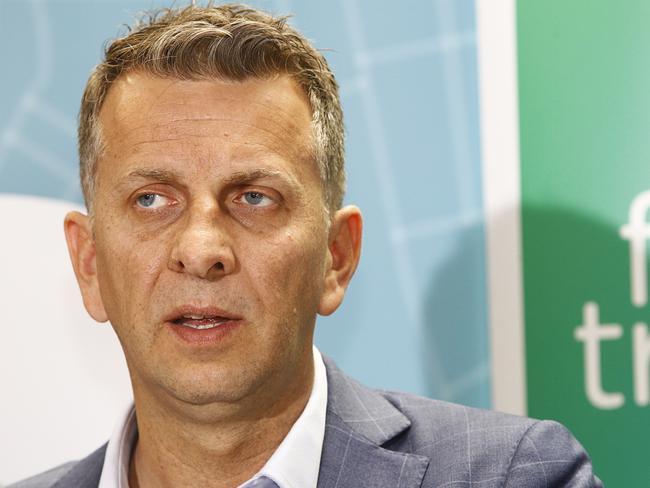
STANDING ROOM ONLY
WEARY commuters hopping on at Redfern Station may be lucky to catch a ride, but they have long had Buckley’s chance of snagging a seat.
Data obtained by News Local revealed Redfern as having the worst figures for overcrowding on the Sydney Trains network.
A whopping 6335 train services from Redfern were standing-room only for the 88 days from November 2016 to February 2017.
The loss of all its express Blue Mountains train services under the new timetable changes would only put more pressure on the state’s sixth-busiest station.
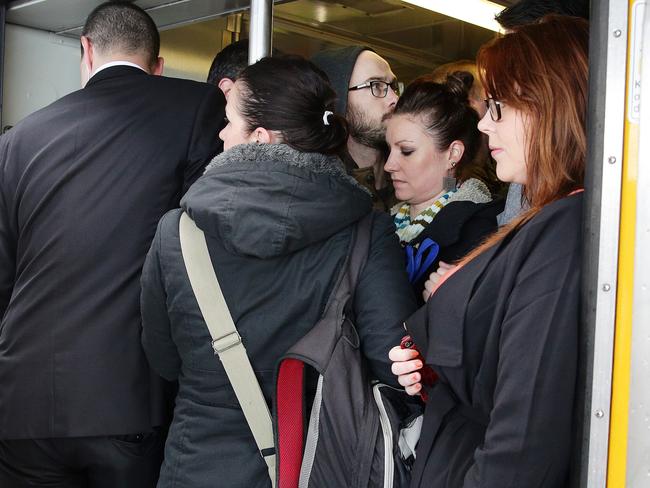
Nearby Central, Town Hall, Wynyard and Strathfield stations rounded out the top five, with 5970, 3708, 2330 and 2275 standing-room only services for the period.
Further down the track Sydney’s second CBD, Parramatta, had the 10th-worst figures for overcrowding with 1327 train services standing-room only, although there is relief on the horizon with construction on stage one of the Parramatta Light Rail to start in 2018, pending planning approval. The light rail will begin operating in 2023, with planning for stage two now underway.
“Our preferred 9km route will connect with Stage 1 of the project north of the Parramatta River through the suburbs of Ermington, Melrose Park, Wentworth Point and on to Sydney Olympic Park,” Premier Gladys Berejiklian said.
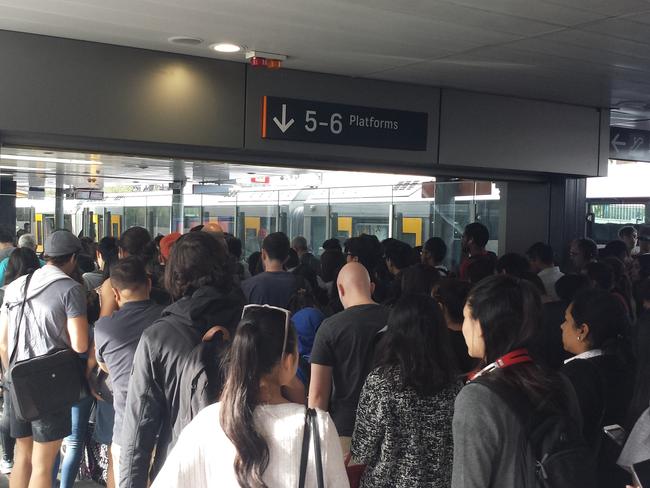
Cumberland councillor Ross Grove has meantime tabled a potential route from Parramatta to Bankstown via Guildford and Granville.
Figures, released to News Local through the Government Information Public Access Act, show bus route 389 as one of the most heavily complained about.
Transport for NSW received 954 commuter complaints about the North Bondi service between July 1, 2015, and June 30, 2016. On November 22 last year it was standing-room only at Bondi Beach on 56 occasions.
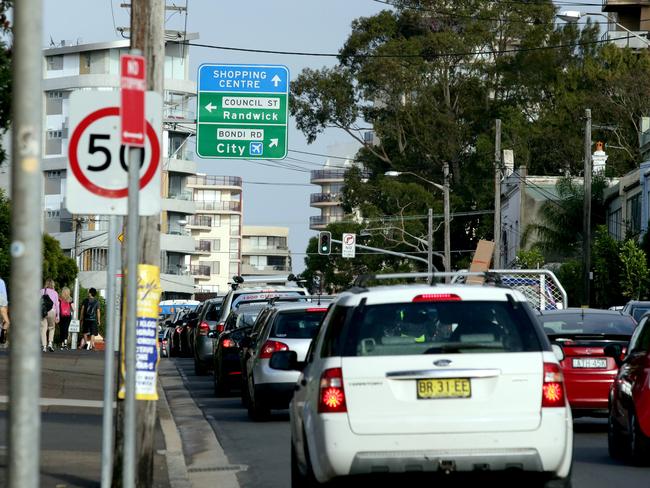
B-LINE BOUNCE OR BUST?
EXHAUSTED commuters are set to save as little as six minutes a day and only gain 210 extra seats during the morning peak-hour crush when the State Government’s new $500 million B-Line bus service rolls out on Sunday.
Secret Cabinet documents, obtained by the Opposition under freedom of information, show the new double-decker bus service will only marginally improve trips to the city as long-time Northern Beaches commuters remain sceptical about any reduction in travel times.
The 31km route will see 38 double-decker limited-stop buses travelling between Newport and the CBD every five minutes in the morning and evening peak periods, and every 10 minutes at other times.
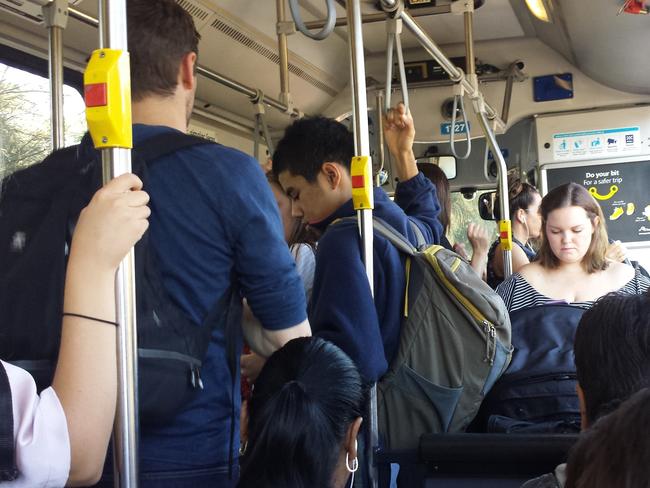
Transport Minister Andrew Constance said the B-Line would deliver a “better, more reliable service with a state-of-the-art new bus fleet”.
However, Opposition Transport spokeswoman Jodi McKay said “it’s just another transport white elephant”.
“The government has been very bullish in getting this done, and there’s been a lack of community consultation where bus stops have been moved along the route,” she said.
Ms McKay said the B-Line was “ripe for the picking” in the government’s privatisation plans.
“The question is, will the government rule out privatising the B-Line before or after the next election?” she said.
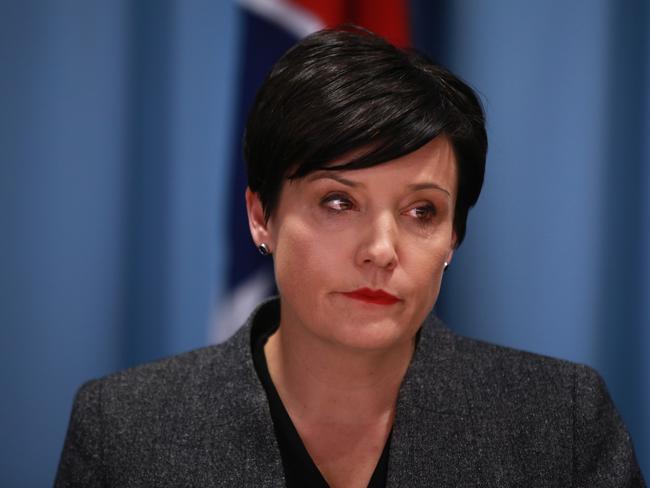
Mr Constance said there was evidence which showed buses were more efficient under private operators.
“In electorates such as Fairfield ... there is a very clear benchmark difference with buses leaving depots on time, on-time running and performance, and customer satisfaction,” he said in Parliament last week.
The Cabinet documents also reveal that the government will be running a large-scale advertising campaign for the B-Line over the coming weeks.
However, Mr Constance and his department refused to reveal how much was being spent on spruiking the B-Line service.
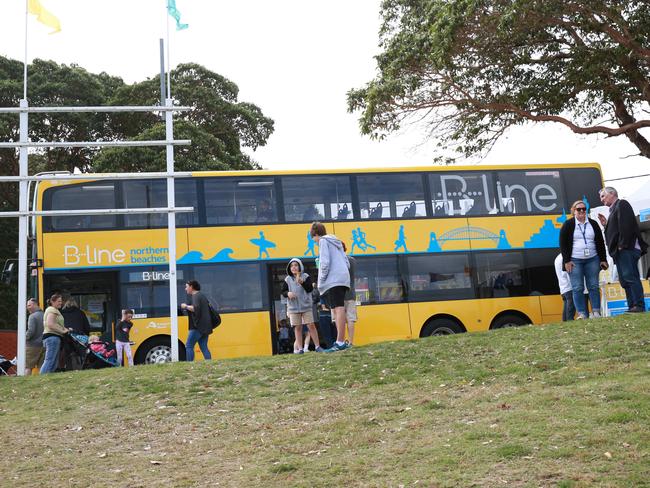
STRESSFUL TOLL OF COMMUTING
EXPERTS say the long and stressful commutes are having huge detrimental impacts on our personal lives.
“Long commutes eat into family life where people are not seeing kids off to school or tucking them into bed at night,” Professor Ann Williamson, a world-renowned authority on transport safety from the University of NSW, said.
“People get used to it, but over time it affects the state of mind. People just function on autopilot.”
Prof Williamson and a colleague at the Transport and Road Safety Research Centre have just completed a study on commuter fatigue which showed drivers were most at risk of crashing on their way to work.
“We tested 60 people over several months in a simulator and found people performed worst on mornings during a 30-minute commute behind the wheel due to the negative effects of long commuting,” she said.

“This is sleep inertia. When we first get up, it takes a while to get going — and it’s even worse after a run of long days.
“Truck drivers, nurses and doctors — those who have worked through the night — are very vulnerable to this.”
Neuroscientist Rohan Walker, an expert on what causes psychological disorders, says there is a “core trio of events” which increase stress levels of commuters.
“These include threatening, controlling and unpredictable events,” Associate Prof Walker, of the University of Newcastle, said. “Traffic and public transport in general are both unpredictable and often uncontrollable. And the threat is that if we don’t get to work on time, it will cause problems.
“There’s an inevitability that this extra stress over time will lead to serious problems.”
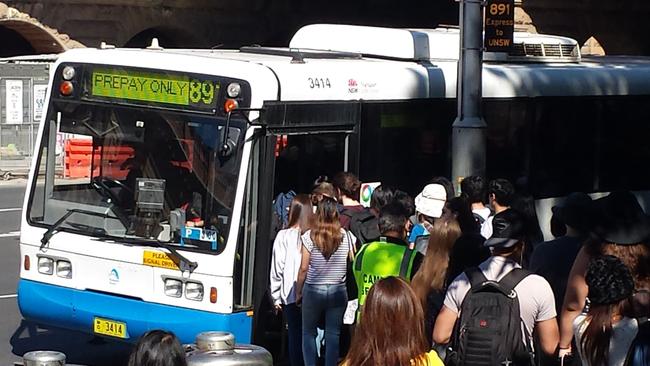
‘VICTIM OF TOO LITTLE, TOO LATE’
SYDNEY is paying the price for “decades of planning neglect” amid warnings of “lots more” commuting pain and struggles to find affordable housing before it gets any better.
A planning expert says “governments of all complexions” have failed to make sure infrastructure upgrades kept pace with the population explosion — and recent announcements of major projects across Sydney were just “smoke and mirrors” to deflect from the current transport woes.
“We’re a victim of too little, too late,” Residents’ Infrastructure and Planning Alliance spokeswoman Jacqui Goddard, who has worked as an architect in both Australia and Scotland, said.
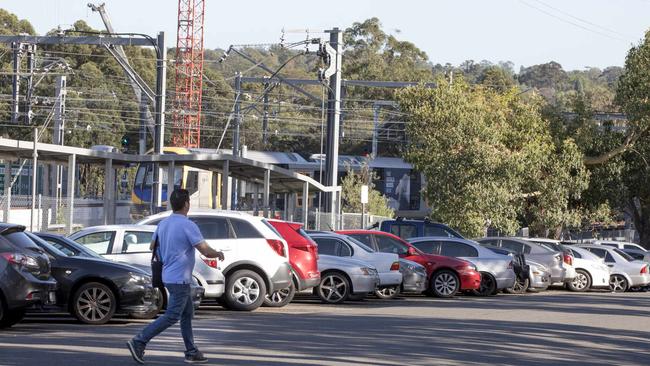
“There has been a lack of forethought and a co-ordinated planning approach for a long time.
“Governments use all the buzz words like transport and housing choices, but the reality is most people have limited choices. Governments have long feared voter backlash for making the tough planning decisions.”
As the State Government rolls out its multi-billion dollar plans to overhaul Sydney’s transport network, Ms Goddard accused many councils of “bowing to developer pressure” as more apartment blocks are squeezed into already congested suburbs.
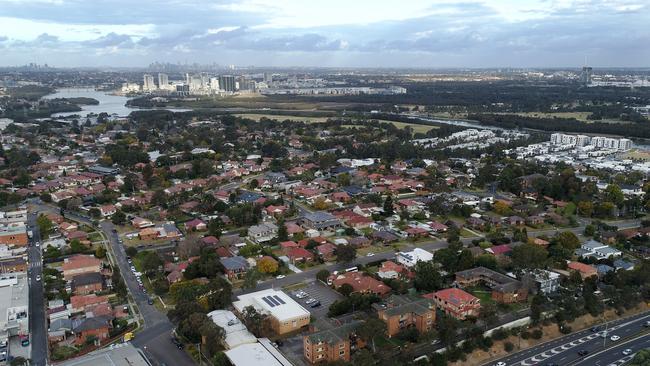
“They are putting in place residents before having the appropriate infrastructure to match it — and it’s the residents who suffer from a lack of basic services and carparking pressures,” she said.
Sydney’s population is expected to grow by 1.7 million to 6.3 million in 2036 and up to 7.9 million in 2056, and Ms Goddard says the growing pains will be felt for the lifetime of today’s youth.
“It’s a tough road ahead,” she said.
NORTH-SOUTH RAIL LINE PUSH
WESTERN Sydney Rail Alliance members continue to strongly advocate for a north-south rail line from the 36km Sydney Metro Northwest at Rouse Hill Station in the north, to Campbelltown in the south, to link Sydney’s growth areas.
But a joint NSW/Federal Government Western Sydney Rail Needs Scoping Study, which was due to be finalised in mid-2017, remains unreleased. The study assesses if and how rail services could be operational at Badgerys Creek airport when it opens in 2026 or, if not, how soon afterwards.
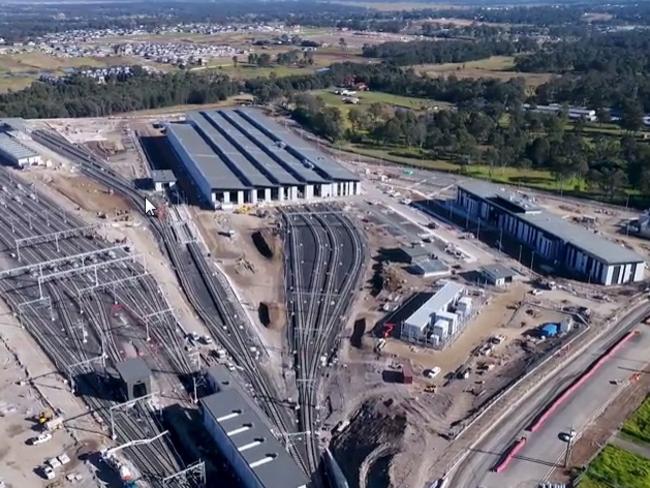
Pressed to explain why it still hasn’t been made public, even as building of Sydney’s second airport forges ahead, a Transport for NSW spokeswoman said: “The final report on the Western Sydney Rail Needs Study is currently being finalised for consideration by the NSW Government and the Commonwealth.”
Among six options outlined in a study discussion paper is a new north-south airport rail link between Macarthur and Schofields via St Marys and the Penrith Education and Health precinct, a link Deloitte and Arup studies suggest would inject $44.7 billion to the western Sydney economy from 2024 to 2040.
The paper outlines it would take 55 minutes on the fastest train to get from the airport to Sydney CBD on this line, and 35 minutes to get to Parramatta.
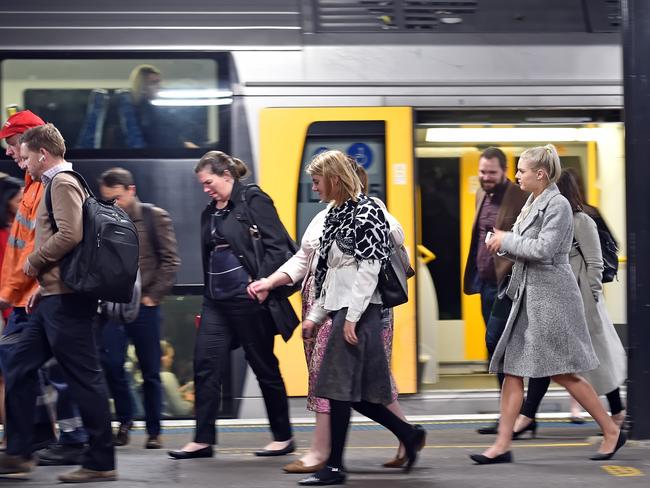
PUBLIC TRANSPORT TIMETABLE CHANGES FROM SUNDAY
Central
■ 1500 additional weekly services across the network, including 750 on weekend
Hornsby
■ Customers travelling on the T1 Northern Line from Hornsby to the CBD via Macquarie Park late at night will now have access to a train every 15 minutes on average instead of every 30 minutes today
■ Doubling the amount of direct services on the T1 Northern Line from Hornsby to the CBD via Macquarie Park on weekends
■ Customers between Berowra and Asquith will see a doubling of late night services to a train every 30 minutes
■ In addition to extra rail services, the Metrobus route M60 is set to receive over 70 extra weekly services introduced either side of the morning and afternoon weekday peak periods for customers travelling between Hornsby, Castle Hill and Parramatta, as well as more frequent services on weeknights and later services on weekends.
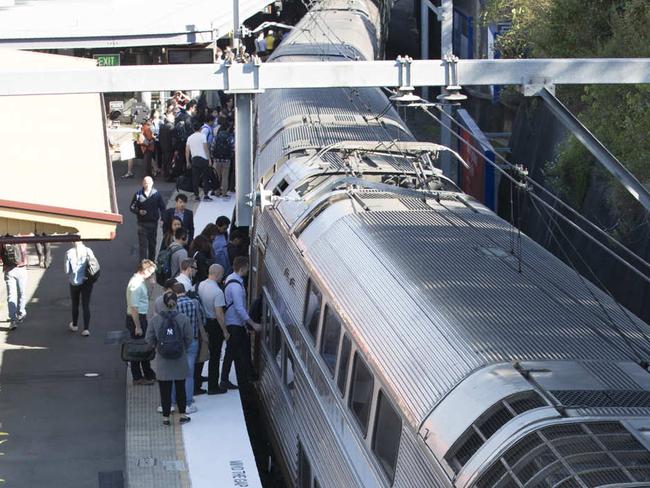
Epping
■ Extra services on the T1 Northern Line for customers travelling from Hornsby to the CBD via North Ryde late at night — that’s a train every 15 minutes on average instead of every 30 minutes
■ Doubling trains on the T1 Northern Line late at night between Epping and Sydney CBD via Strathfield with a train every 15 minutes instead of every 30 minutes
■ Doubling direct services on the T1 Northern Line to the CBD between Hornsby and North Ryde via Macquarie Park on weekends
■ Doubling frequency between Epping and Central via Strathfield on weekends with an extra two services every hour, or a train every 15 minutes
■ Customers on bus route 630 between Blacktown and Epping will receive an additional 10 weekly services. This route will also be changed to operate to and from Epping only, with transfer required to bus or train services for travel to Macquarie Park.
■ Similarly, an additional 10 weekly services for those travelling on route 621 from Cherrybrook to Macquarie Park during the morning peak.
■ Finally, customers will see five weekly services on route 620N from Dural to the City in the morning peak.
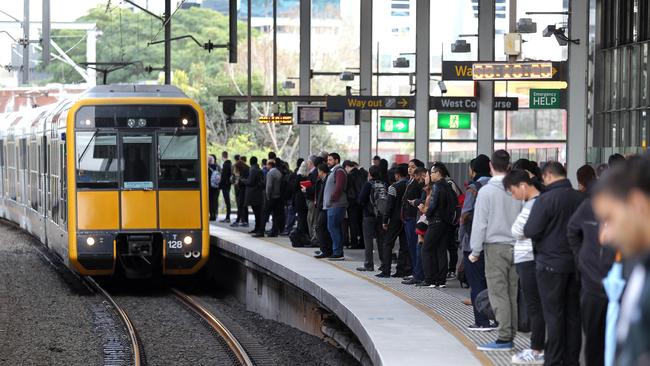
Parramatta
■ More than 250 express trains every week between Parramatta and the Sydney CBD, which means up to 20 express trains per hour, or a service every three minutes during the busiest periods
■ Increase in trains on weekends for Blacktown, Seven Hills, Westmead and Parramatta customers, with a service on average every 10 minutes
■ 24 new Blue Mountains express trains will operate on weekends, stopping at Parramatta, with dedicated 8-car trains
■ A new weekday Sydney to Lithgow return express service will operate, including a stop at Parramatta
■ Direct access to popular Inner West Stations for the first time via the T2 Inner West
■ 160 new services per week on the T5 Cumberland Line running on weekends, as well as late at night for the first time, improving connections between Western Sydney and South West Sydney
■ More services during most of the week for customers travelling towards Penrith on the T1 Western
■ Parramatta customers will receive more than 400 additional weekly bus services, including on routes T80 between Liverpool and Parramatta, 711 between Parramatta and the Children’s Hospital at Westmead, and M60 between Hornsby and Parramatta via Castle Hill
■ A doubling of service frequency on weekdays and weekends is also planned for those travelling on the route 711, between Parramatta and Children’s Hospital at Westmead
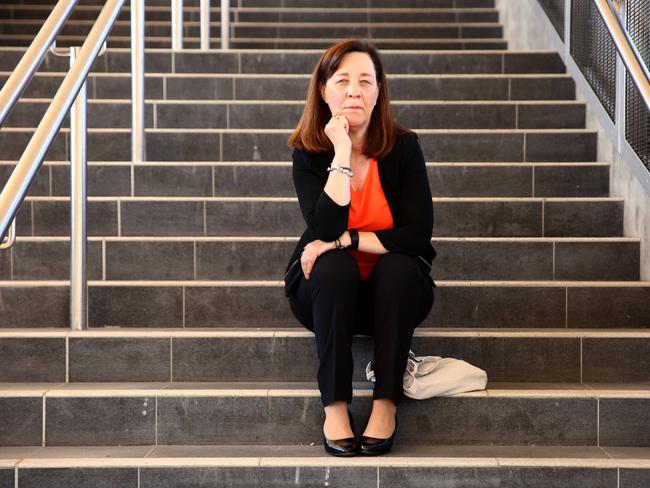
Penrith/St Marys
■ 22 per cent increase in the number of trains stopping at Penrith station
■ More trains in the AM peak for Penrith, Kingswood and Werrington stations, with a service, on average, every seven and a half minutes, instead of every ten minutes today
■ Weekend and late-night frequency to the Sydney CBD will be doubled on the T1 Western Line at stations between Penrith and Doonside with two additional trains every hour, or a train on average every 15 minutes throughout the majority of the day
■ 24 new Blue Mountains express trains will operate on weekends, stopping at Penrith, with dedicated 8-car trains
■ A new weekday Sydney to Lithgow return express service will operate, including stops at Penrith and Parramatta
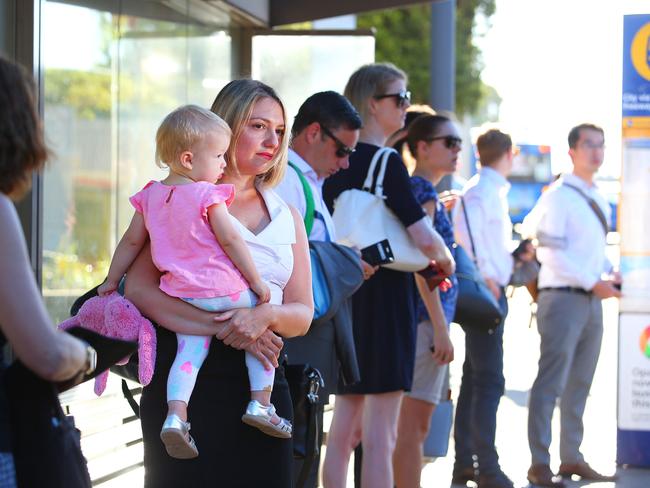
Lane Cove
■ More than 140 additional weekly services on Route 292 between Marsfield and the Sydney CBD via Lane Cove. This route has been slightly altered to operate via Mowbray Road in Lane Cove North, providing customers with an all-day service to Lane Cove Interchange, the Sydney CBD and Macquarie Park seven days a week
■ An additional 50 weekly services will be added to route 251 between Lane Cove West and the City via Lane Cove, with an extra six services during each weekday morning peak and another four extra services during each weekday evening peak
■ More than 80 additional weekly services will be added on routes 533 and 534
■ Almost 60 additional weekly ferry services on the new F8 Cockatoo Island route between Cockatoo Island and Circular Quay
■ More late-night services on the T1 Northern Line between North Ryde and the CBD, with an extra two trains every hour and the number of weekend services operating from North Ryde to the CBD will be doubled.
■ An extra two trains an hour will be added on weekends for customers travelling to the CBD via the North Shore Line on Saturdays and Sundays
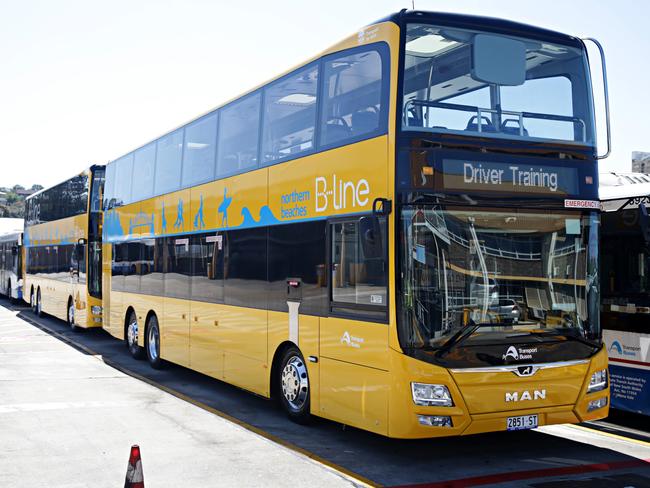
Northern Beaches
■ More than 3200 extra weekly bus services are being introduced across the Northern Beaches, including over 2000 weekly B-Line services
■ Four new routes are being created including the route 146 from Wheeler Heights to Manly, route E54 from Mona Vale to Milsons Point, route E75 from Warringah Mall to the Sydney CBD and 199 from Palm Beach to Manly
Eastern Suburbs
■ More than 80 additional weekly services on route 324 providing extra frequency between Edgecliff Interchange, Rose Bay and Watsons Bay, and improving service frequency on weekdays and weekends
■ 40 additional weekly services added to route 325 between Edgecliff Interchange and Watsons Bay
■ 25 additional weekly services will be added to routes operating along Bondi Road during the morning peak period on weekdays, providing additional travel opportunities
■ More than 220 additional weekly services have also been added on routes 352, 370 and 418 between the Eastern Suburbs and Inner West
■ 55 additional weekly services have also been added to routes 392, X92, 374 and X74 to-and-from the Sydney CBD
■ 85 additional weekly services on the new F4 Cross Harbour and F7 Double Bay ferry routes
To search for changes to your trip go to transportnsw.info
● How will the changes affect your commute to work?
● Tell us if you’ve got a horror commuter story.
● TOMORROW: Match races around some of Sydney and the Central Coast’s busiest commuter routes.

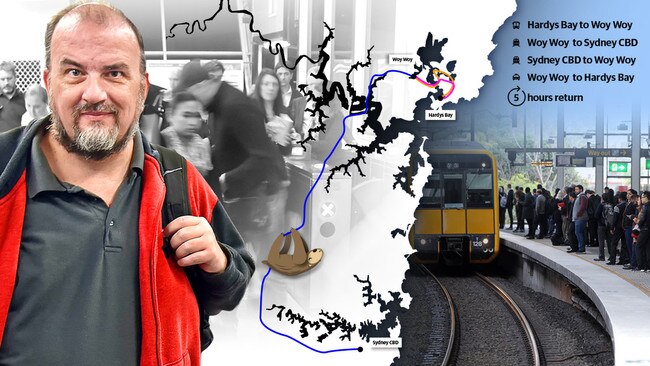
Add your comment to this story
To join the conversation, please log in. Don't have an account? Register
Join the conversation, you are commenting as Logout
Manhunt after terrifying series of home invasions
The Mid-North Coast has been rocked by a series of violent home invasions, which saw doors smashed and lone female occupants threatened with knives, along with multiple car thefts.
Money for nothing: Locals fume over rate hike shock
A rates hike has left Mid-North Coast locals in disbelief with one questioning whether his town sees any benefit at all with the money all going to Port Macquarie pet projects.